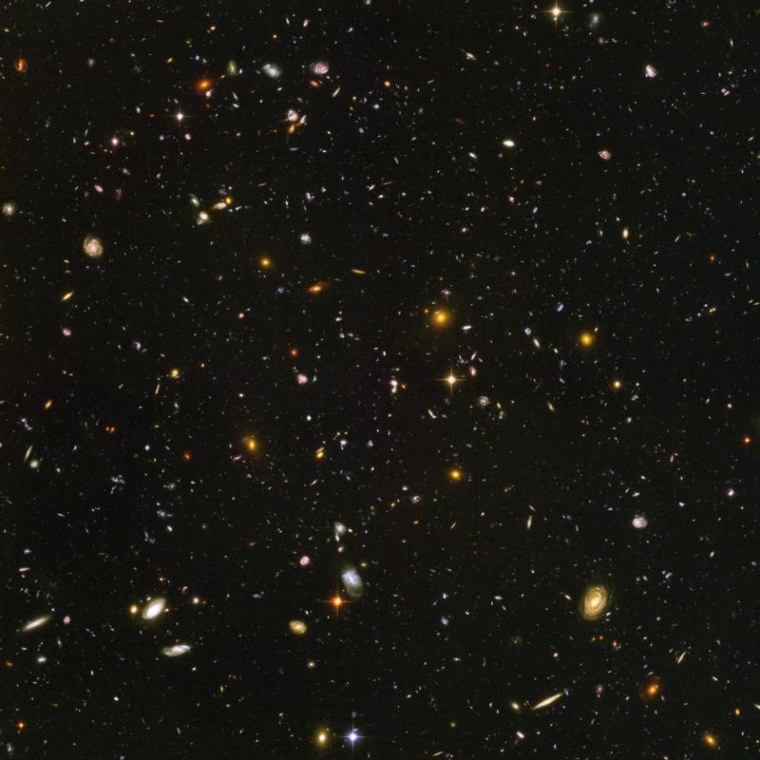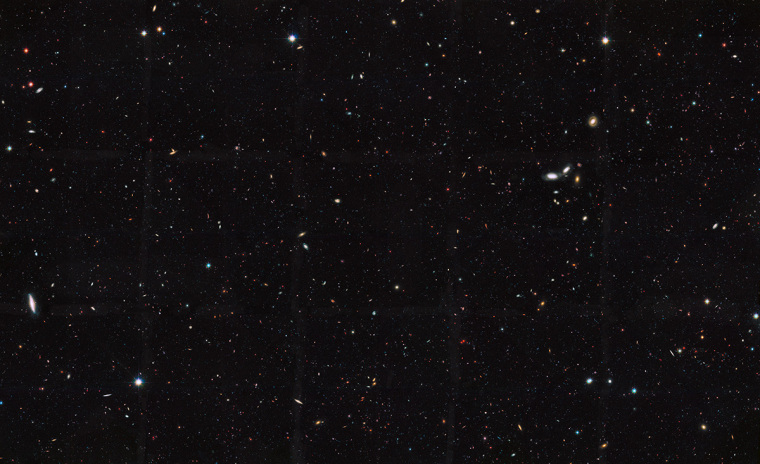Did you notice anything different last week? Did things feel more crowed than usual? They should have, because Universe just got a lot denser.
Okay so maybe not exactly, but the estimated density of galaxies in the Universe did change, thanks to some intrepid astronomers at the University of Nottingham in England. Up until last week, the party line in astronomy was that there were roughly 100 billion galaxies in the (observable) Universe. Now, we are all revising our talking points because it seems that number is twenty times too small. A team led by Christopher Conselice places the new estimate of galaxies in the Universe at two trillion!

If your wondering where these numbers come from, I can assure you it isn't from counting galaxies one by one. Instead, it comes from taking a representative sample of the number of galaxies in a certain area of the sky and extrapolating from there. The 100 billion number comes from analysis based on the Hubble Ultra Deep Field (HUDF) - an image captured by the Hubble Space Telescope in 2004 of an area of the sky no bigger than President Roosevelt's eye on a dime held at arm's length. In this minute speck, Hubble saw ~10,000 galaxies ranging from nearby to back to only a few million years after the Big Bang. Previous observations showed that the Universe looked roughly the same in all directions (the technical term is "isotropic"). So by calculating how many HUDFs it took to cover the whole sky, astronomers deduced that there should be about 100 billion galaxies in the Universe.

Conselice and his team decided to take a close look at this number to see if we might be missing anything. They took deep images taken by Hubble as part of the Great Observatories Origins Deep Survey (GOODS) and converted them into 3D space to better determine the density of galaxies at various distances. Then they mathematically determined how many galaxies at each distance Hubble was "missing" due to its detection limits. The answer was, Hubble was missing a lot... like 90%. Conselice calculated that there should be many more small galaxies at greater distances in order to produce the larger and more massive galaxies we see in the nearby Universe today.
So the next clear night you have, wherever you are, go outside and hold up a dime at arms length. Imagine that there are now 200,000 galaxies in that tiny spot on the sky and marvel at how we can figure all that out from the even tinier spot in the skies we live on.
Here's some more geek from the week:
- Spiders can "hear" you coming across the room through the hairs on their legs.
- Amazing taxidermic versions of the creatures conjured up by Dr. Seuss.
- Biologists are striving to create a Human Cell Atlas (aka an inner Google Maps) for all the cells in the human body.
- Footsteps from human ancestors thousands of years ago found in near a volcano in Tanzania.
- Speaking of footprints, here are nine places you can go in the U.S. to see wheel tracks from the Oregon Trail.
- "Capturing Everest" will let you experience Mount Everest in virtual reality.
- Great infographic and summary by Compound Interest on the history of picturing the atom.
- The Moon is being pummeled by meteorites a lot more than we though, about 33% more.
- European astronomers find ultraviolet starlight plays a central role in forming chemicals that lead to the chemistry for life.
Keep on geeking!
@Summer_Ash, In-house Astrophysicist
